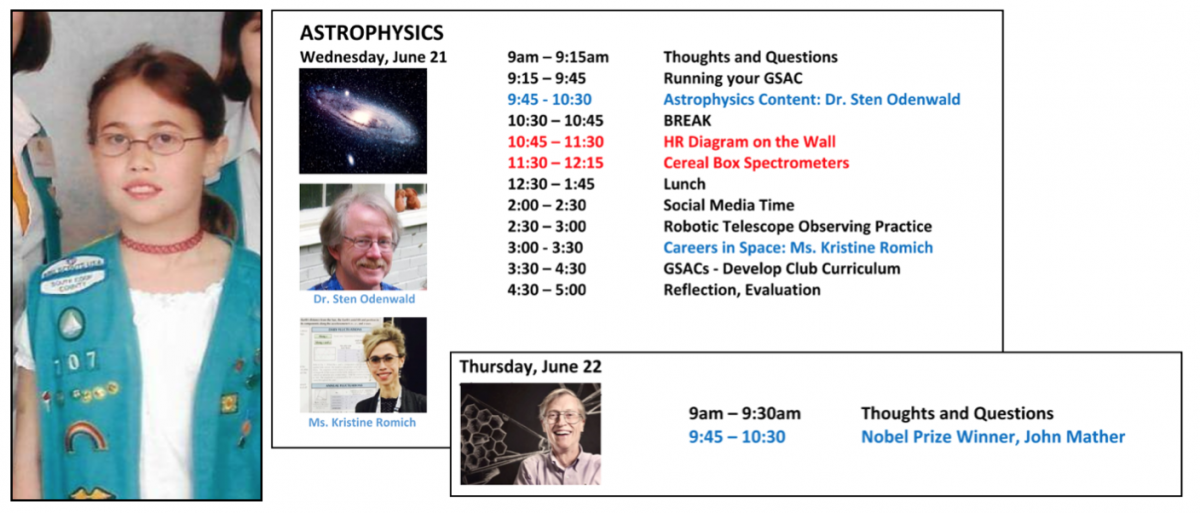Thursday, June 22, 2017
By:
On my second or third day at Goddard, resident astronomer and Marymount University professor Lou Mayo — noted for both his scientific work and his outreach efforts — stopped by to see Dr. Viall. He’d come to ask her to speak at an event he was organizing: a weeklong STEM workshop for high-school-age Girl Scouts.
The Girl Scout Astronomy Club Summit, hosted on Goddard’s campus, unites girls from across the country with established researchers through five days of lectures, hands-on activities, and tours. In addition to learning about space science, participants are equipped with the resources they need to start an astronomy club back at home. The Summit is part of "Reaching for the Stars," a wider education initiative for Girl Scouts of all levels led by the SETI Institute.
I was a Girl Scout myself for ten years, and back in California I volunteer with the Girl Scouts of Greater Los Angeles, so it's fair to say Scouting is dear to my heart. While Prof. Mayo was describing the program to Dr. Viall, I had a thought: what if I could get in on this, too?
For youth who aspire to a STEM career, interacting with real NASA scientists is a fantastic opportunity. But given the age disparity (a Ph.D. takes several years on top of a bachelor’s, and then there’s the 3 to 6 years of postdocs), some might find it difficult to relate. It could be helpful, I suggested, for the girls to also hear from someone younger — someone who's only a few steps ahead of them. An intern, who straddles the boundary between student and research professional, would be ideal.
Prof. Mayo agreed.

This Wednesday, I addressed a roomful of Girl Scouts, adult volunteers, and amateur astronomers in the conference space where Bootcamp was held earlier this month. The talk focused on internship opportunities for high-school and college students, along with some general tips for academic and professional success. My intent, above all, was to convey the following:
- It’s never too early to get started. And that goes for every STEM field, not just astronomy. There are countless positions available to students as young as 16 — NASA itself provides some every summer, and others are offered through various universities and national laboratories. The Pathways website is useful.
- Don’t be shy. If there’s one thing I’ve learned since I've gone back to school (besides, you know, lots of physics), it’s that tenacity gets results. If you’re struggling in class, ask for help. If you’re worried you won’t get into a program, apply anyway. Remember what your objective is, and plan your actions accordingly — even if that means leaving your comfort zone.
- Science is tough, but it’s also rewarding. Nobody goes into physics because it’s easy. The underlying concepts are intellectually demanding, and the work is often far-removed from the colorful images you find in magazines. (A good portion of an astronomer’s time is actually spent writing, running, and debugging code!) But the thrill of discovery makes it worthwhile. The universe is inconceivably vast, yet we've managed to make sense of much of it. Wow!
- If you know you want to be a scientist (and you're willing to put in the effort), you are capable of becoming a scientist. This, in particular, is something I wish I'd heard more of in high school. I deliberately avoided STEM during my first time in college because I doubted my ability to do well in it. You can read more about my personal journey here.
I'm always delighted to see young people with purpose and ambition, and my thanks goes out to Prof. Mayo for letting me share my experiences with a few of them. It's believed that the first person who will set foot on Mars is in high school right now. For all I know, I might have met her this week.
Kristine Romich
